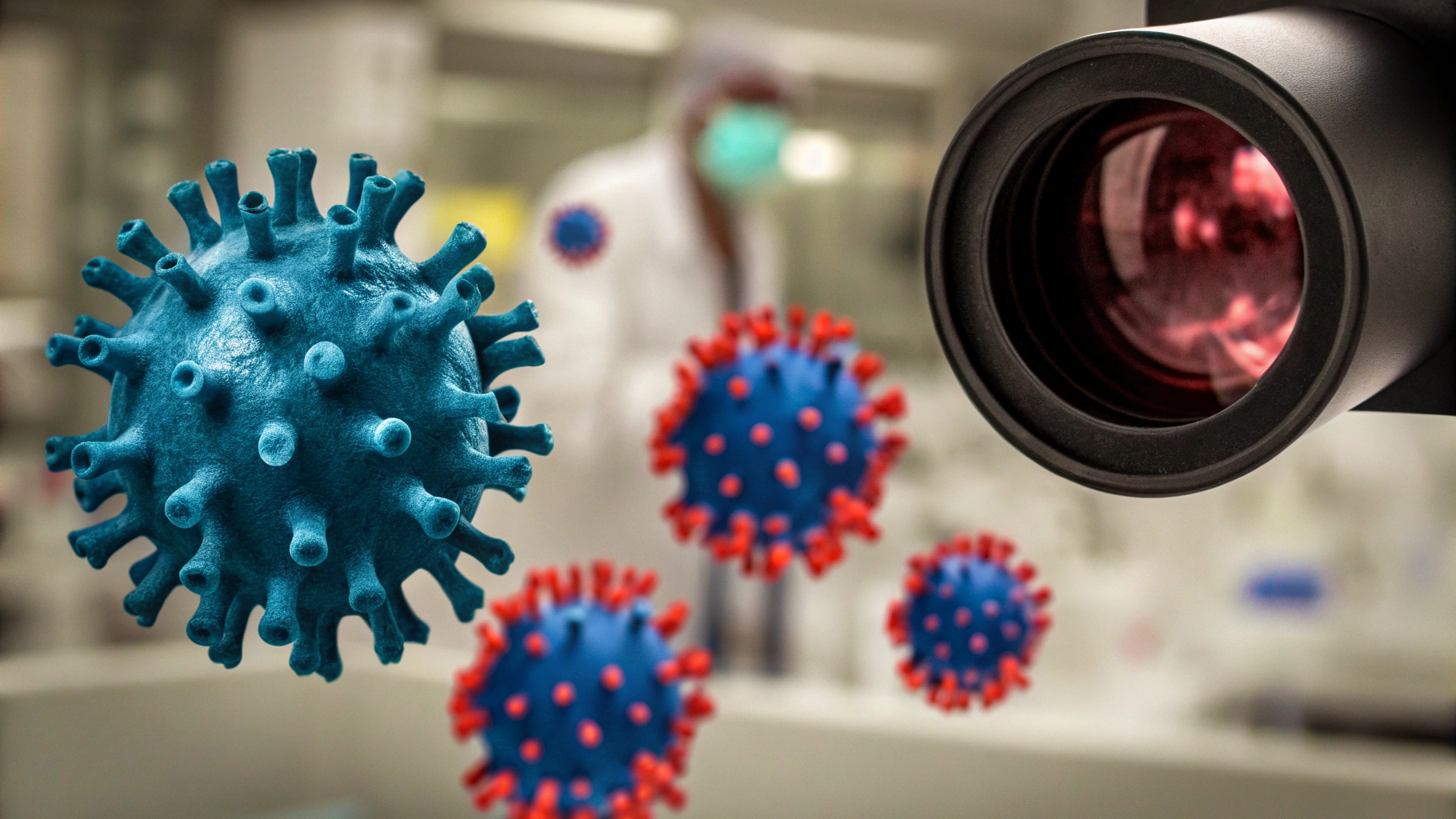What Factors to Consider When Choosing a Gene Therapy Vector?

Overview
When selecting a gene therapy vector, several critical factors must be considered:
- The target cell type
- The duration of gene expression
- Potential immune responses
- The vector's safety and efficacy profile
Recognizing these factors is essential for aligning the chosen vector with therapeutic objectives. This alignment is demonstrated by the distinct advantages and limitations inherent in both viral and non-viral vectors, which play a pivotal role in the effective delivery of therapeutic genes.
Introduction
Selecting the appropriate gene therapy vector is a critical step in the battle against genetic disorders, cancers, and infectious diseases. These vectors serve not just as delivery systems; they are essential in ensuring that therapeutic genes reach their intended targets, ultimately shaping treatment outcomes.
With a plethora of options available—from viral vectors such as adeno-associated viruses to non-viral alternatives—what essential factors must be considered in this selection process? Grasping the intricacies of vector selection can significantly influence the success of treatments, prompting vital inquiries regarding:
- Efficacy
- Safety
- Regulatory compliance
in the swiftly advancing field of gene therapy.
Define Gene Therapy Vectors and Their Role in Treatment
Gene therapy carriers serve as essential tools for introducing therapeutic genes into a patient's cells, which leads to the important question of what factors must be considered when choosing a vector for a gene therapy trial, as they play a crucial role in managing or preventing diseases.
When addressing genetic disorders, cancers, and infectious diseases, it is crucial to understand what factors must be considered when choosing a vector for a gene therapy trial, as these agents can deliver new genetic material or modify existing sequences. By facilitating the transfer of genetic material, carriers enable the expression of therapeutic proteins, which can restore normal cellular functions.
For instance, adeno-associated virus (AAV) constructs, which account for 36% of approved genetic therapies, have demonstrated significant effectiveness in treating inherited retinal disorders such as X-linked retinitis pigmentosa and achromatopsia.
When evaluating the use of AAV carriers, one must consider what factors must be considered when choosing a vector for a gene therapy trial, as they not only enhance safety—given that they are not associated with human illness—but also improve patient outcomes by targeting specific cell types.
By 2025, the understanding of gene delivery systems has advanced, underscoring their importance in modern healthcare and the ongoing innovations in delivery technology aimed at improving treatment efficacy and accessibility for individuals with genetic conditions.
Explore Types of Gene Therapy Vectors: Viral and Non-Viral Options
Gene therapy carriers can be broadly categorized into viral and non-viral options, each presenting distinct advantages and applications. Viral carriers, such as adenoviruses, lentiviruses, and adeno-associated viruses (AAV), are engineered to deliver genetic material effectively, leveraging their inherent capability to infect host cells. They typically provide high transduction efficiency; however, this comes with significant safety concerns, including immune responses and potential toxicity. For instance, the immunogenicity of viral tools can lead to adverse reactions, complicating their therapeutic application.
Conversely, non-viral carriers, which include plasmid DNA and lipid nanoparticles (LNPs), present a safer alternative with reduced immunogenicity. Their popularity is attributed to their adaptability and simplicity in manufacturing, although they generally exhibit lower transfection efficiency compared to their viral counterparts. Recent advancements in non-viral delivery techniques, such as electroporation and sonoporation, are enhancing their effectiveness in clinical settings, thereby increasing their significance in gene treatment applications.
The decision regarding the choice between viral and non-viral carriers involves understanding what factors must be considered when choosing a vector for a gene therapy trial, as well as specific therapeutic objectives and patient needs. For example, adenoviral carriers are often utilized for their capacity to transport substantial DNA loads, making them suitable for cancer treatment applications, whereas lentiviral carriers are favored for their ability to transduce both proliferating and non-proliferating cells, which is crucial for addressing various genetic conditions. As the field of genetic treatment progresses, ongoing research aims to refine these carriers by addressing what factors must be considered when choosing a vector for a gene therapy trial, with the goal of improving their safety and effectiveness for a broader range of applications. Notably, the Viral and Non-Viral Vector Production Market is projected to expand significantly, reaching USD 56.8 Billion by 2034, underscoring the increasing importance of these agents in the industry.

Identify Key Factors in Selecting a Vector for Gene Therapy Trials
Choosing a suitable treatment delivery system involves understanding what factors must be considered when choosing a vector for a gene therapy trial. Central to this decision are the target cell type, the desired duration of expression, and what factors must be considered when choosing a vector for a gene therapy trial, such as the potential for immune responses. The entity's capability to efficiently transmit the therapeutic element and its safety characteristics are paramount.
For instance, adeno-associated viruses (AAV) are favored due to their low immunogenicity and prolonged expression, making them suitable for chronic conditions. However, AAV carriers have a compact genome that limits the size of the insert to approximately 5 kb, which can restrict their application for larger genes. In contrast, lentiviral delivery systems, while effective for long-term integration, carry risks of insertional mutagenesis.
The method of administration—whether intravenous or intramuscular—highlights what factors must be considered when choosing a vector for a gene therapy trial, as it can significantly influence treatment outcomes. Balancing these considerations is essential to align the chosen direction with therapeutic objectives and ensure patient safety, including what factors must be considered when choosing a vector for a gene therapy trial.
Current best practices underscore the importance of thorough preclinical testing to assess delivery system performance and safety. Research indicates that AAV-based treatments have led to enhanced outcomes in clinical trials for hereditary conditions, with over 70% of clinical trials for genetic treatments utilizing viral carriers due to their efficacy. This underscores the critical nature of strategically selecting delivery systems in advancing genetic treatments.
Examine Regulatory Considerations for Vector Selection in Clinical Trials
It is essential to understand what factors must be considered when choosing a vector for a gene therapy trial, as regulatory factors play a crucial role in this selection process. The FDA and EMA have set forth comprehensive guidelines that delineate the safety and efficacy requirements for gene therapies. These guidelines encompass critical elements such as:
- Delivery system characterization
- Manufacturing processes
- Preclinical testing
Adherence to Good Manufacturing Practices (GMP) and Quality System Regulations (QSR) is imperative to ensure that products are developed reliably and securely. For instance, the FDA requires specific information regarding the percentage of empty capsids in adeno-associated virus (AAV) vectors, while the EMA mandates a suitable potency assay for materials designated for first-in-human clinical trials. Notably, only 20% of clinical trial data submitted to both agencies matched, highlighting significant inconsistencies that can complicate the approval process. Understanding what factors must be considered when choosing a vector for a gene therapy trial is essential for researchers to navigate the complexities of clinical trial approval and ensure patient safety. Ultimately, this knowledge facilitates the successful development of innovative gene therapies.
Conclusion
Selecting an appropriate gene therapy vector is a pivotal step in developing effective treatments for genetic disorders, cancers, and infectious diseases. The choice of vector directly impacts the success of gene therapy trials, underscoring the necessity of meticulously evaluating various factors, including the type of vector, its safety profile, and its efficacy in delivering therapeutic genes. A comprehensive understanding of these elements is essential for optimizing patient outcomes and advancing the field of gene therapy.
This article delineates key considerations in vector selection, such as the distinction between viral and non-viral carriers, each presenting unique advantages and challenges. It emphasizes the significance of factors like target cell type, duration of expression, and regulatory compliance, all of which are critical in determining the effectiveness and safety of gene therapy. With advancements in delivery systems and a burgeoning market projected to reach USD 56.8 billion by 2034, the importance of informed vector selection cannot be overstated.
Ultimately, the journey toward successful gene therapy hinges on a thorough understanding of the complexities involved in vector choice. Stakeholders in the field must prioritize research and collaboration to navigate regulatory frameworks and enhance treatment efficacy. By doing so, the potential for innovative gene therapies to transform lives and address previously untreatable conditions can be realized, paving the way for a healthier future.
Frequently Asked Questions
What are gene therapy vectors?
Gene therapy vectors are carriers used to introduce therapeutic genes into a patient's cells, playing a crucial role in managing or preventing diseases.
Why are vectors important in gene therapy?
Vectors are essential because they facilitate the transfer of genetic material, enabling the expression of therapeutic proteins that can restore normal cellular functions.
What types of diseases can gene therapy vectors address?
Gene therapy vectors can address genetic disorders, cancers, and infectious diseases.
What is an example of an effective gene therapy vector?
Adeno-associated virus (AAV) constructs are an example, accounting for 36% of approved genetic therapies and showing effectiveness in treating inherited retinal disorders such as X-linked retinitis pigmentosa and achromatopsia.
What factors should be considered when choosing a vector for a gene therapy trial?
Factors include safety, effectiveness, the ability to target specific cell types, and the vector's association with human illness.
How do AAV carriers enhance patient outcomes?
AAV carriers enhance patient outcomes by improving safety since they are not associated with human illness and by targeting specific cell types for more effective treatment.
What is the future outlook for gene delivery systems?
By 2025, advancements in the understanding of gene delivery systems are expected to improve treatment efficacy and accessibility for individuals with genetic conditions.
